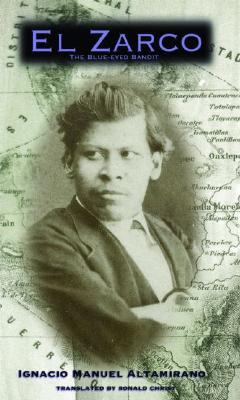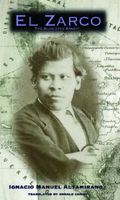- Welcome to FictionDB, Guest
- | My Account
- | Help

El Zarco, the Blue-Eyed Bandit: Episodes of Mexican Life Between 1861-1863 — Ignacio Manuel Altamirano
Zarco the Blue-eyed Bandit (1901) by the Mexican nationalist Ignacio Manuel Altamirano (1843â€"1893) is one of the earliest Latin American novels written by an Indian. Altamirano, whose childhood language was Nahuatl, received one of the finest educations available in mid-nineteenth-century Mexico and rose to the highest political and cultural echelons of Mexico. One of the most famous men of his age (along with the Indian president, Benito Juárez, who appears in Zarco), Altamirano was a battle-tested soldier, a fiery political militant, and the mentor of the generation of writers who came of age at the turn of the century. Zarco tells the story of an honorable and courageous Indian blacksmith who falls in love with a haughty village girl, only to have her elope with the cold-blooded bandit, “Zarco Blue Eyes.” Based on major and minor real-life historical characters and incidents, the novel's romantic narrative is accompanied by scenes of stark violence and vigilantism, as private citizens take the law into their hands to pursue and exterminate roaming bands of criminals that are terrorizing rural Mexico. Full of color, drama, and historical detail, Zarco the Blue-eyed Bandit is essential reading for readers interested in Mexican history, banditry, and the Indian question.
"Nineteenth-century Mexico comes alive in this elegantly crafted melodrama, a bridge to understanding the period's traditional gender roles, its stark moral divides, and, particularly, its harsh racial hierarchies. Ignacio Altamirano was one of several Latin American novelists who escaped the ideological grip of scientific racism long before the region's essayists and scientists could do so. Novelists did not have to disprove prevailing racist notions in order to escape them in fiction. They could create characters who defied racial stereotypes, appealing to their readers to recognize the truth of their depictions despite the pronouncements of prestigious European white supremacists. Not to be missed!" -- John Charles Chasteen, Patterson distinguished professor of history, University of North Carolina at Chapel Hill

